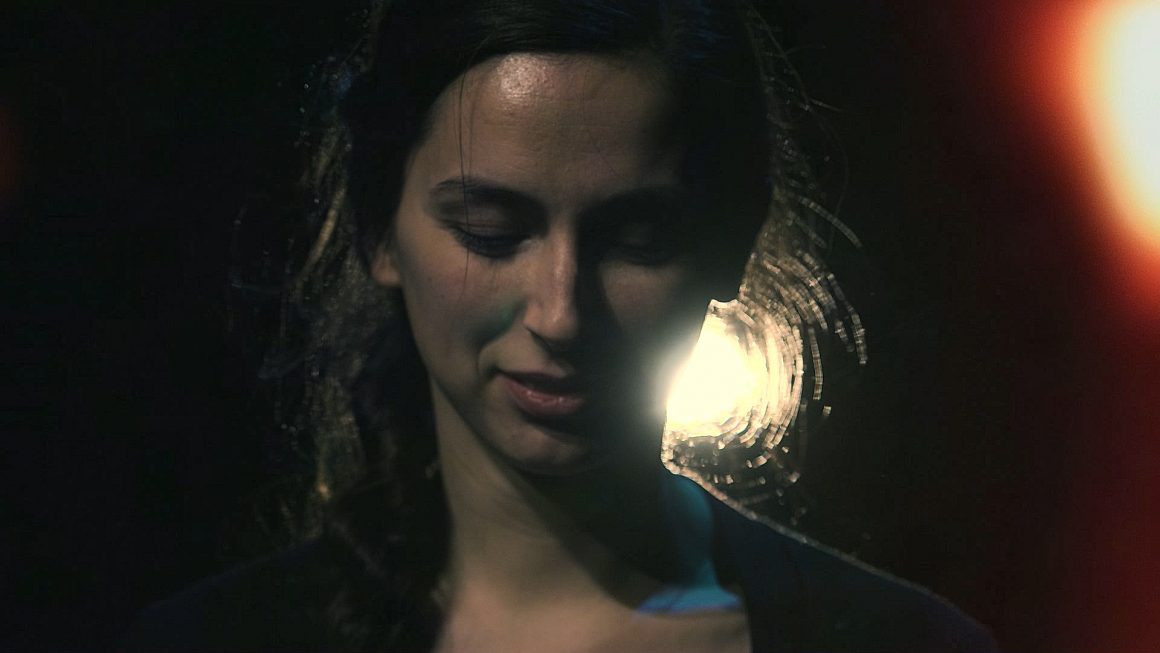
Calgary Fringe Festival 2021: Why We Tell Stories
By Rachneet Randhawa, August 27 2021—
Why We Tell Stories is an accessible spoken word production screened on-demand this year at the Calgary Fringe Festival.
This performance uses a diverse array of artistic mediums from American Sign Language (ASL), captions, dance, music, projection and so much more to cater to, and be inclusive of, different abilities. The goal of the virtual theoretical piece is to transcend communication barriers so that the audience can consider and appreciate the strengths of different modes of expression. The show is a feature of contemporary storytelling through TED Talk-style lectures and spoken word performance.
The narrator, Miranda Krogstad, tells tales of life experiences based on universal themes of love, loss, humour and self-expression. Overall, Krogstad’s goal is to utilize her individual personal experiences to point out the commonalities and shared human experiences in all of us. The show itself uses an interdisciplinary approach by incorporating multiple mediums of communication, languages and senses.
Various poems are performed in both written and verbal forms against different backgrounds — whether that’s signing with hands for the hard of hearing or rapping a beat.
The exact format is as follows:
- A dancing sequence
- An ASL poem performed by interpreters
- A catchy tune that’s been converted into rap based on Korgstad’s creative childhood illustrations
- An emotional memoir to Krogstad’s father, a visualization meditation
- A foodie’s paradise that uses Krogstad’s love for puns using 30 different varieties of pasta
- Mental health awareness
- The finale — “Imperfect.”
For this review I have divided the entire performance into five key categories that make the most sense from my perspective. The most playful poem was the one based on the instrument-weaving spider or “Madame Arachnid’s Nightmare” poem If you’ve got a sound. It was Krogstad’s initial revelation on how one can find their inner voice.
In her narration, Krogstad explains that she approaches poetry writing as “person versus themselves” or “person versus their circumstances.” Using a rap style paired well with the inner struggles we all face battling ourselves as imperfect humans.
The boldest poem was the very first one. “Love Poem” is a dance ensemble which outlines the purpose of sharing and listening to a narrative and its profound impact. The poem itself is all about unconditional love across all divides of cultures, traditions, norms and customs — no matter who you are or where you come from we can all choose to love.
I had never seen contemporary dance paired with spoken word poetry so it was a first for me and I quite enjoyed the collaboration as both mediums complimented and bolstered one another.
The most unique poem was an “Ode to Pasta” — or Krogstad’s first love — full of fun puns alongside delectable dishes of pasta. Again, I would have never thought the amazing pairing between eye-catching recipes and poetry would couple so well together. In a way, recipes are an artistic medium themselves as something passed down through generations.
The best stanza was “When I feel like my life is about to capsize / You gnocch-i at my door, vermi-chill-me-out / I gotta say, without a doubt, you spa-ghett-me better than anyone else.”
The poem that most challenged the status quo was “Crazy.” It was presented towards the end of the performance and questioned the stigma we have around mental health and dealing with self-doubt and failure. I thought it was smooth to include the cover of Crazy by Gnarls Barkley and a throwback to the one-hit radio wonder of 2006. The best stanza was “The same two syllables we ate like penny candies were pin-sharp pop rocks / Shot like bullets from mouths and electric shocks stinging ears and distorting faces.”
Lastly, the best overall and most powerful performance was by far “Cross-eyed” — American Sign Language (ASL) performance. There was something about using the power of language to transform a story without sound and solely through movements and facial expressions, hand gestures and body movement.
I also appreciated the theme of the poem of a misfit kid not fitting into the conventional norm of standard schooling and learning in a traditional classroom. It’s presented, with incredible clarity, the idea that you don’t have to force yourself to conform like everybody else and, at the end of the day, you can be free to be a creative type of person.
The most memorable stanza was “And try to notice the chalk smudges on the floor or the criss-cross sun splotches painting patterns on the floor / No I had to ignore them I was sure I could do this / I was sure I could look at all the same sites as all the other students / The height of a parabola and the dates of all these wars / All these other facts I forget what we learned them for.”
We recommend you check out the on-demand screening of Krogstad’s Why We Tell Stories which is available until Aug. 28, with an updated version being released in the fall. Krogstad can be reached on her website and @mirandakpoet on Instagram.
Whether you are a poet at heart, or even a newbie spitting freestyle verses in epic rap battles, the performance is incredibly and humbly relatable to the down-to-earth human experience.
